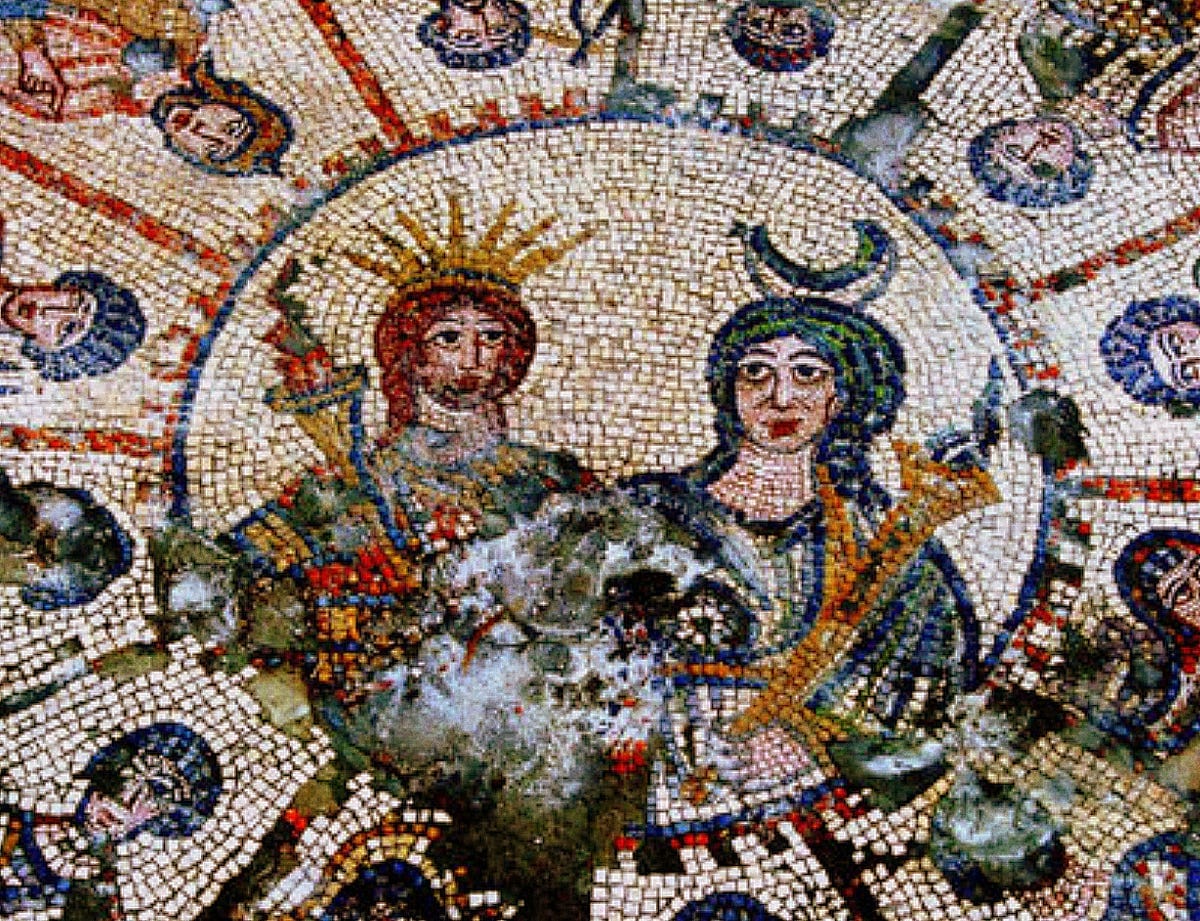A Different Perspective on Mary Magdalene
While many know Mary Magdalene as a devoted follower of Jesus, the Gnostic Gospels offer a different perspective. These ancient texts portray her as a leading figure among Jesus’ disciples, recognized for her profound wisdom and spiritual understanding. Imagine Mary Magdalene engaging in deep theological discussions with Jesus, even surpassing male disciples in her grasp of his teachings!
The Trusted Confidante and Keeper of Secret Wisdom
The Gnostic Gospels suggest that Mary Magdalene was likely Jesus’ most trusted confidante. They depict her receiving unique teachings, which she later shared, despite skepticism from some male disciples. This challenges traditional views of early Christianity, where women were not typically seen as leaders or teachers.
The Gospel of Mary, a significant Gnostic text, reveals Mary Magdalene as a guardian of secret knowledge entrusted to her by Jesus. This knowledge encompasses profound subjects like the nature of reality, the soul’s journey, and the path to liberation from ignorance. In these texts, she emerges not just as a follower, but as a spiritual guide whose authority rivals that of the apostles.
Challenging Traditional Narratives
Mary Magdalene’s elevated role in the Gnostic Gospels suggests a more inclusive and perhaps feminist interpretation of Jesus’s message. Her prominence as a disciple and her access to secret wisdom challenge the traditional gender roles of the time.
Some scholars suggest that the Gnostic Gospels may have emerged as a response to the male-dominated hierarchy of the early Church. Mary Magdalene’s portrayal in these texts could be seen as a way of reclaiming women’s spiritual authority and promoting a more egalitarian understanding of early Christianity.
The Gnostic Mary Magdalene: A Symbol of Inner Wisdom
Beyond her historical context, the Gnostic Mary Magdalene symbolizes a path to enlightenment through direct spiritual experience and inner knowledge. She embodies the Gnostic emphasis on personal understanding and “gnosis” — a special kind of knowing — as the key to salvation, rather than strict adherence to religious rules. This emphasis on individual spiritual exploration continues to resonate with many today.
Remember: The Gnostic Gospels offer just one interpretation of Mary Magdalene’s life. Scholars are still studying these texts and debating their meaning. However, the Gnostic view provides a compelling layer to our understanding of early Christianity, prompting us to consider the diverse expressions of faith that have existed throughout history.
Was Mary Magdalene Jesus’ Wife? Exploring Gnostic Perspectives
Let’s delve into the intriguing relationship between Jesus and Mary Magdalene as depicted in Gnostic writings. These texts present a radical departure from traditional Christian interpretations, portraying Mary Magdalene as more than just a follower. Instead, she emerges as a leading figure, a spiritual partner to Jesus. This perspective, considered controversial even today, challenges long-held assumptions about early Christianity.
Gnostic texts like the “Gospel of Mary” and the “Gospel of Philip” depict Mary Magdalene as Jesus’ most trusted companion, receiving his unique teachings and embodying profound divine wisdom. They suggest that she understood Jesus’s teachings on a level that some of his other disciples may not have achieved.
The Sacred Marriage: A Union of Divine Energies
Gnosticism often focuses on the concept of the “sacred marriage.” This concept goes beyond a traditional understanding of marriage; it symbolizes the merging of divine masculine and feminine energy to create perfect balance. Gnostics viewed Mary Magdalene as the embodiment of Sophia, a figure representing wisdom and spiritual knowledge. Her relationship with Jesus, therefore, becomes a representation of this sacred union— a cosmic dance between masculine and feminine energies.
Rediscovering Lost Voices
Unfortunately, many Gnostic texts were either hidden or destroyed by early Church authorities who sought to maintain a specific narrative. As a result, Mary Magdalene’s true role in early Christianity remains somewhat shrouded in mystery.
However, recent scholarship has led to the rediscovery and study of these ancient Gnostic writings. By piecing together these fragmented texts, researchers are gaining a fuller understanding of early Christianity and the significant role Mary Magdalene may have played. This ongoing research promises to yield further insights in the years to come.
The story of Jesus and Mary Magdalene, as told through the lens of Gnosticism, challenges us to reconsider what we thought we knew and to appreciate the diversity of beliefs that existed within early Christianity.
[https://www.lolaapp.com/classic-1934-novel-written-in-the-form-of-an-autobiography]
What Were the 7 Powers of Mary Magdalene? A Gnostic Exploration
Moving beyond traditional narratives, let’s explore how the Gnostic Gospel of Mary Magdalene presents a completely different picture of her—one that diverges from the image of a repentant sinner often found in conventional Christian teachings.
These writings position Mary Magdalene as a symbol of spiritual authority, suggesting that early Christianity may have been more inclusive and accepting of women in leadership roles than previously thought. Imagine her as a trusted advisor, engaging in deep theological discourse with Jesus, receiving direct transmissions of his wisdom.
The Sacred Marriage and Its Implications
Central to the Gnostic understanding of Mary Magdalene is the idea of a “sacred marriage” between her and Jesus. This concept, however, delves deeper than a romantic connection. It signifies the merging of divine wisdom and the lived experience of Christ consciousness. This metaphor elevates Mary Magdalene, challenging the traditionally male-dominated narratives surrounding early Christianity.
Regrettably, much of Mary Magdalene’s story, as revealed in the Gnostic Gospels, was minimized or suppressed by some early Church Fathers. Despite this historical erasure, her narrative continues to resonate, particularly among those seeking a more balanced and inclusive approach to spirituality.
[https://www.lolaapp.com/dingley-tariff-impact]
Who Was Jesus to the Gnostics?
The Gnostics held a unique perspective on Jesus that differed significantly from traditional Christian views. Instead of seeing him as God’s son sent down from heaven, they perceived him as a divine guide who helped humanity recognize its own inherent divinity.
At the heart of Gnostic thought lay the concept of “gnosis,” meaning “knowledge” in Greek. Gnostics believed that each person carries a spark of the divine within, often obscured by the material world. Jesus, in their view, acted as a catalyst to help individuals awaken to this inner light.
The Gospel According to Mary Magdalene: A Gnostic Lens
The “Gospel According to Mary Magdalene” provides a glimpse into the Gnostic understanding of Jesus. This text casts Mary Magdalene as a leading disciple, one who truly comprehended Jesus’s teachings, perhaps even more so than some of his other followers. The Gospel of Mary emphasizes that true understanding originates from within—it’s about personal revelation, not just outward displays of faith.
To the Gnostics, Jesus’ mission was not to offer salvation from sin but to guide humanity back to its true, divine nature. Through deep self-reflection and introspection, individuals could awaken the “gnosis” within.
Uncovering the Apocrypha of Mary Magdalene
Imagine discovering a hidden collection of texts that offer alternative perspectives on Jesus and early Christianity. These texts, known as the Apocrypha of Mary Magdalene, provide a glimpse into the diverse beliefs that circulated during this period, beliefs that often challenged traditional narratives.
Among these texts, we find the “Gospel of Mary,” which portrays Mary Magdalene as a leading figure among Jesus’s disciples. She is depicted as a trusted advisor who received private teachings and profound insights directly from Jesus. Other texts, like the “Gospel of Philip,” delve into the role of women in early Christian communities, emphasizing the concept of “spiritual marriage” — a deep connection based on shared faith rather than a physical union.
Unorthodox Insights
The Apocrypha of Mary Magdalene, particularly texts like the “Pistis Sophia,” claim to reveal secret teachings that Jesus shared after his resurrection. These teachings emphasize esoteric knowledge and deeper spiritual truths, often presented in symbolic language.
These apocryphal texts are significant because they offer an alternative perspective on who Jesus was and what he taught. They challenge the traditional view of Mary Magdalene as a repentant sinner, presenting her instead as a respected leader and a key figure in spreading Jesus’s message.
A Mosaic of Beliefs
The Apocrypha of Mary Magdalene reminds us that early Christianity was not a monolithic movement. It was a dynamic period with diverse interpretations and perspectives. As researchers continue to uncover and study these texts, we gain a more nuanced understanding of the early Church and its evolution.
- Unveiling Bernhard Caesar Einstein’s Scientific Achievements: A Legacy in Engineering - July 15, 2025
- Uncover who is Jerry McSorley: CEO, Family Man, Business Success Story - July 15, 2025
- Discover Bernhard Caesar Einstein’s Scientific Contributions: Unveiling a Legacy Beyond Einstein - July 15, 2025















